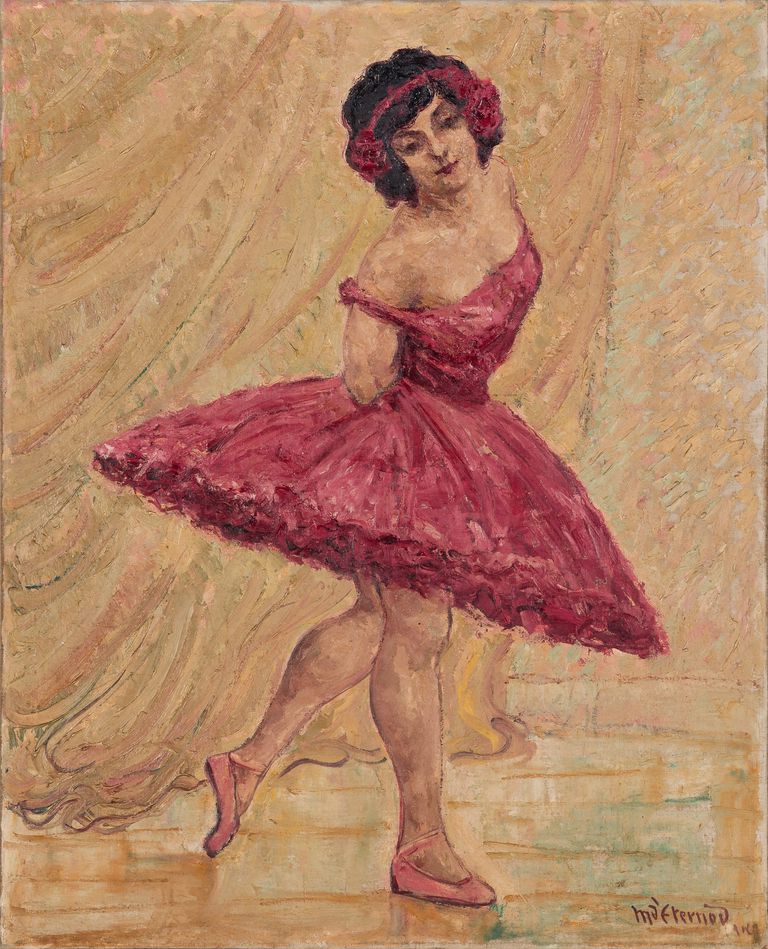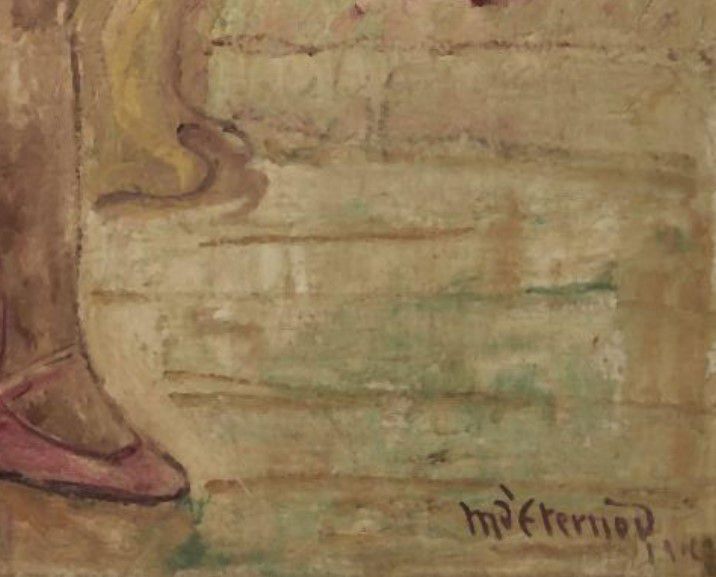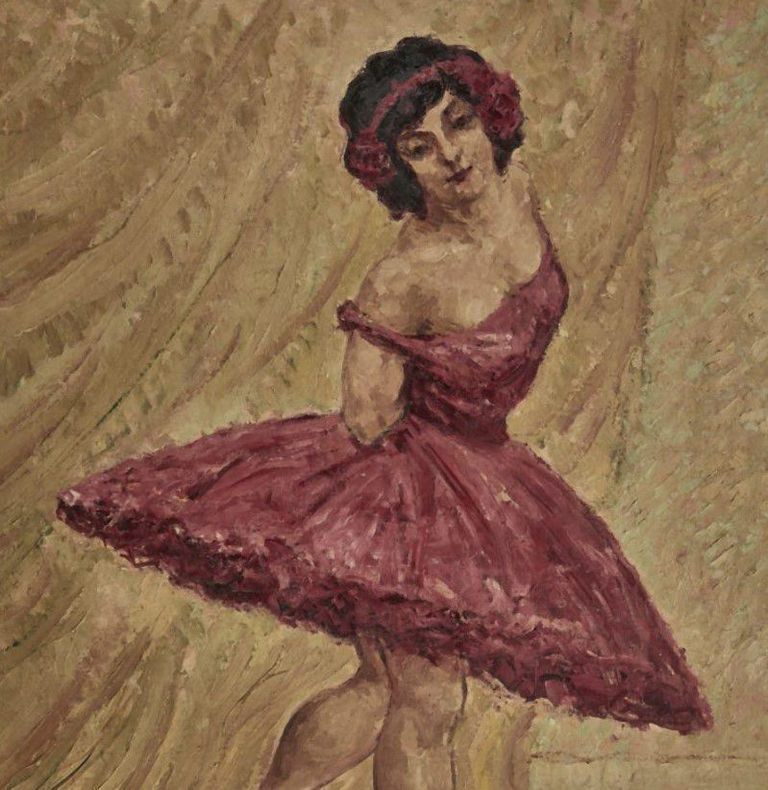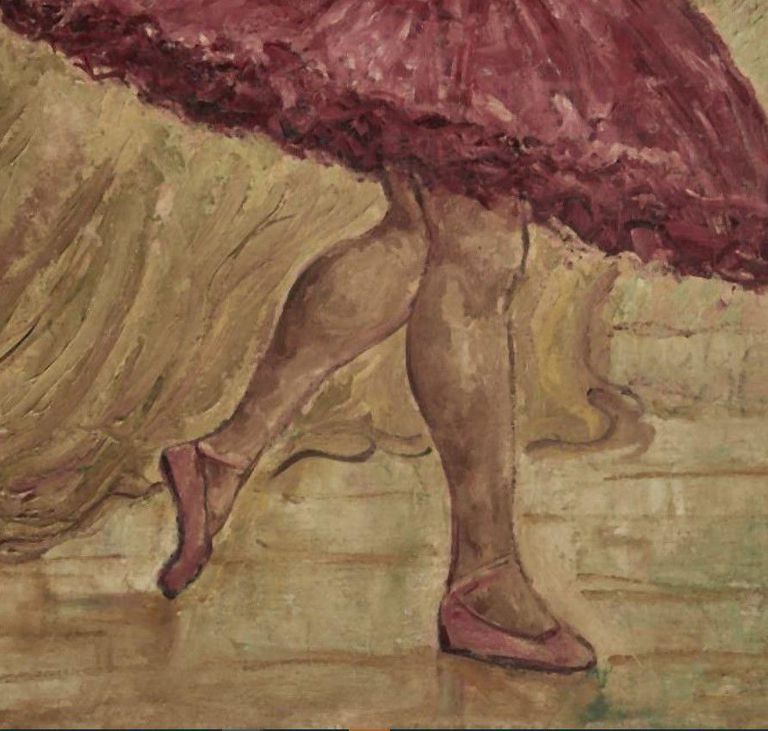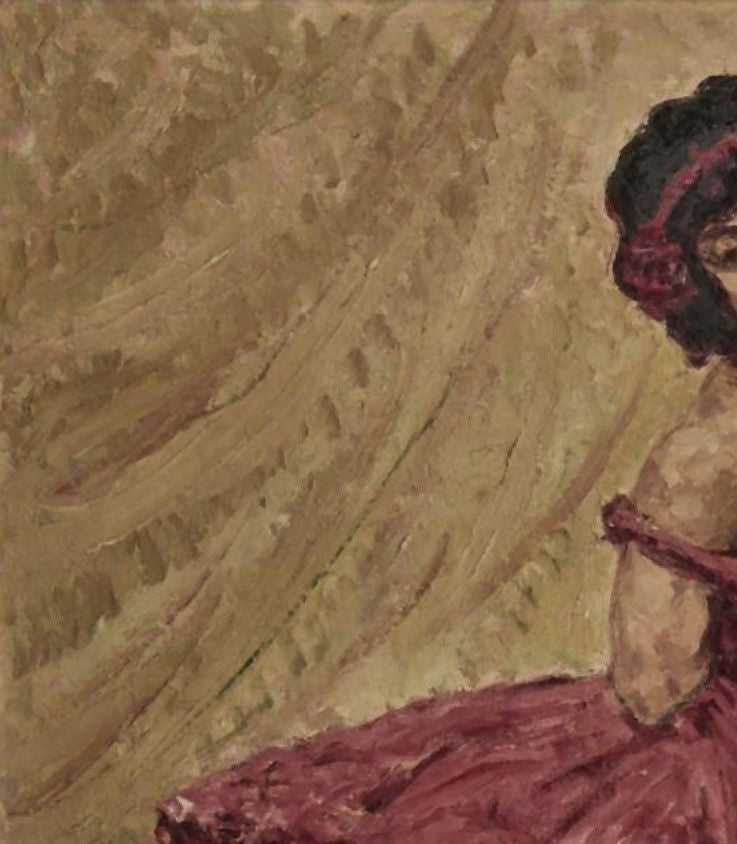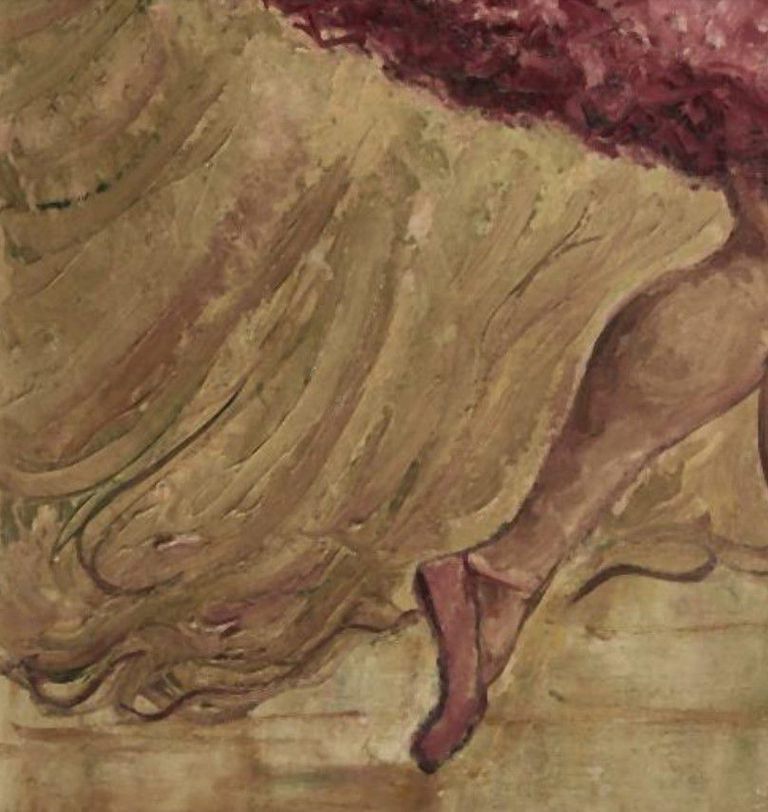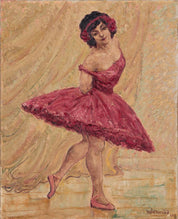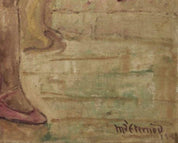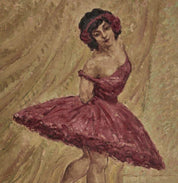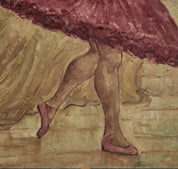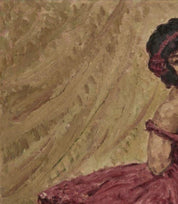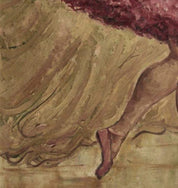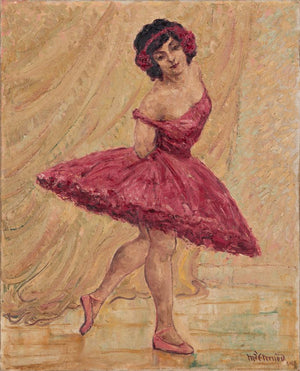Similar Items
Marcel Victor D'Eternod, ''Dancer''
$800.00 USD
Dancer' by Marcel Victor D'Eternod
Marcel Victor D'Eternod's masterpiece 'Dancer' captures the grace and allure of a dancer frozen in time. The backdrop is adorned with a warm and inviting palette, primarily in shades of ochre with delicate hints of orange and touches of subtle green accents. The composition centers around the captivating figure of the dancer, who commands attention with her poised and monolithic posture.
Details:
Artist: Marcel Victor D'Eternod
Title: Dancer
Date: 1916
Medium: Oil on Canvas
Dimensions: 80 x 65 cm
Signature and Date: Lower right corner
Description:
'Dancer' is a mesmerizing exploration of movement and elegance. Set against a backdrop of ochre hues, the dancer stands at the center of the composition, her form commanding attention. Her gaze is directed toward the viewer, creating a magnetic connection that draws us into her world. The dancer's body is captured in a semi-profile angle, evoking a sense of anticipation, as if she is on the cusp of a graceful turn.
D'Eternod's skillful rendering of the dancer's posture is a testament to his artistic mastery. Her stance exudes both dynamism and statuary poise, creating a harmonious balance between movement and stillness. The dancer's pastel red dress adds a subtle yet striking contrast against the warm background, allowing her to stand out with grace and finesse.
The painting reflects D'Eternod's meticulous attention to detail and his ability to convey emotion through artistic expression. The subtleties of light and shadow play across the dancer's form, lending depth and dimension to the composition. The composition's overall effect is one of captivation, inviting viewers to share in the dancer's captivating moment frozen in time.
Condition:
The artwork remains in overall good condition, a testament to its enduring beauty and lasting impact.
About the Artist:
Marcel Victor d’Eternod studied with Ferdinand Hodler. He produced landscapes, often of spacious Swiss mountain views, as well as portraits. The latter from the early years of the 20th century, like the present landscape, clearly show the influence of his teacher in their directness and application of thick paint.
D’Eternod’s art, with its concentration on landscape, was shaped not only by new artistic impulses in Europe, but also by the painter’s close relationship with the natural surroundings of his own country. This almost mystical connection was a characteristic not exclusive to d’Eternod, but also particularly common in the work of many artist at this time. In much of the subjective introspective art of this period, nature became above all a mirror reflecting individual feelings and moods.
While artists such as d’Eternod and Hodler promoted a generic Swiss national identity through their art, they also wanted to express their innermost feelings. Conceptually, this desire for self-expressions was linked to nationalism as well as symbolism. Indeed, the shift from Naturalism (representing nature from a personal perspective) to Symbolism (representing personal feelings through natural imagery) involved only a small step. Like the French symbolists, d’Eternod wanted to convey the ineffable in his work. To do this, he focused, not on the outward appearance of nature, but on nature’s creative process, positing the existence of a supersensory spiritual world accessible through intuition. The English romantic poet Samuel Taylor Coleridge had condemned the superficiality of recording mere appearances, urging artists and writers to probe deeper to reveal the spiritual link between nature and the human soul. In Switzerland, Germany and the Nordic countries there was a strong nationalistic movement, and Symbolism often focused on landscape painting, and a strong school devoted to this subject developed at the turn of the century.
Like d’Eternod, Ferdinand Hodler painted several similar views of Lake Geneva seen from Chexbres (Fig. 1 & 2). Both artists look down at the expanse of the lake from above, making a large oval composition in which the near shore is echoed by the sweep of the mountains on the far side, while clouds in the sky are reflected in the waters of the lake. It is interesting to note that d’Eternod carries the sense of realism and place almost to the point of abstraction in this work of 1918
Marcel Victor D'Eternod's masterpiece 'Dancer' captures the grace and allure of a dancer frozen in time. The backdrop is adorned with a warm and inviting palette, primarily in shades of ochre with delicate hints of orange and touches of subtle green accents. The composition centers around the captivating figure of the dancer, who commands attention with her poised and monolithic posture.
Details:
Artist: Marcel Victor D'Eternod
Title: Dancer
Date: 1916
Medium: Oil on Canvas
Dimensions: 80 x 65 cm
Signature and Date: Lower right corner
Description:
'Dancer' is a mesmerizing exploration of movement and elegance. Set against a backdrop of ochre hues, the dancer stands at the center of the composition, her form commanding attention. Her gaze is directed toward the viewer, creating a magnetic connection that draws us into her world. The dancer's body is captured in a semi-profile angle, evoking a sense of anticipation, as if she is on the cusp of a graceful turn.
D'Eternod's skillful rendering of the dancer's posture is a testament to his artistic mastery. Her stance exudes both dynamism and statuary poise, creating a harmonious balance between movement and stillness. The dancer's pastel red dress adds a subtle yet striking contrast against the warm background, allowing her to stand out with grace and finesse.
The painting reflects D'Eternod's meticulous attention to detail and his ability to convey emotion through artistic expression. The subtleties of light and shadow play across the dancer's form, lending depth and dimension to the composition. The composition's overall effect is one of captivation, inviting viewers to share in the dancer's captivating moment frozen in time.
Condition:
The artwork remains in overall good condition, a testament to its enduring beauty and lasting impact.
About the Artist:
Marcel Victor d’Eternod studied with Ferdinand Hodler. He produced landscapes, often of spacious Swiss mountain views, as well as portraits. The latter from the early years of the 20th century, like the present landscape, clearly show the influence of his teacher in their directness and application of thick paint.
D’Eternod’s art, with its concentration on landscape, was shaped not only by new artistic impulses in Europe, but also by the painter’s close relationship with the natural surroundings of his own country. This almost mystical connection was a characteristic not exclusive to d’Eternod, but also particularly common in the work of many artist at this time. In much of the subjective introspective art of this period, nature became above all a mirror reflecting individual feelings and moods.
While artists such as d’Eternod and Hodler promoted a generic Swiss national identity through their art, they also wanted to express their innermost feelings. Conceptually, this desire for self-expressions was linked to nationalism as well as symbolism. Indeed, the shift from Naturalism (representing nature from a personal perspective) to Symbolism (representing personal feelings through natural imagery) involved only a small step. Like the French symbolists, d’Eternod wanted to convey the ineffable in his work. To do this, he focused, not on the outward appearance of nature, but on nature’s creative process, positing the existence of a supersensory spiritual world accessible through intuition. The English romantic poet Samuel Taylor Coleridge had condemned the superficiality of recording mere appearances, urging artists and writers to probe deeper to reveal the spiritual link between nature and the human soul. In Switzerland, Germany and the Nordic countries there was a strong nationalistic movement, and Symbolism often focused on landscape painting, and a strong school devoted to this subject developed at the turn of the century.
Like d’Eternod, Ferdinand Hodler painted several similar views of Lake Geneva seen from Chexbres (Fig. 1 & 2). Both artists look down at the expanse of the lake from above, making a large oval composition in which the near shore is echoed by the sweep of the mountains on the far side, while clouds in the sky are reflected in the waters of the lake. It is interesting to note that d’Eternod carries the sense of realism and place almost to the point of abstraction in this work of 1918
Popular Items
































